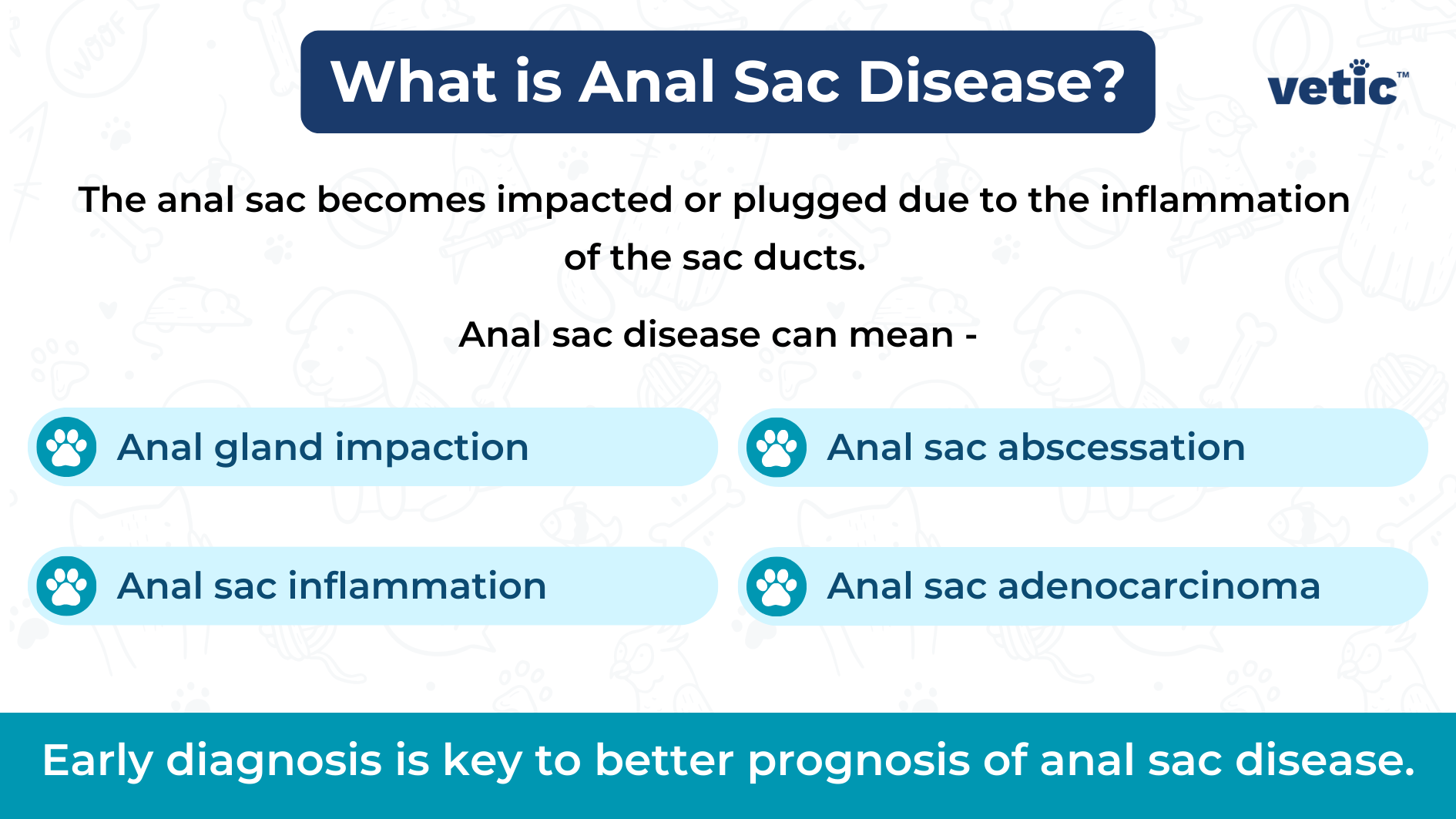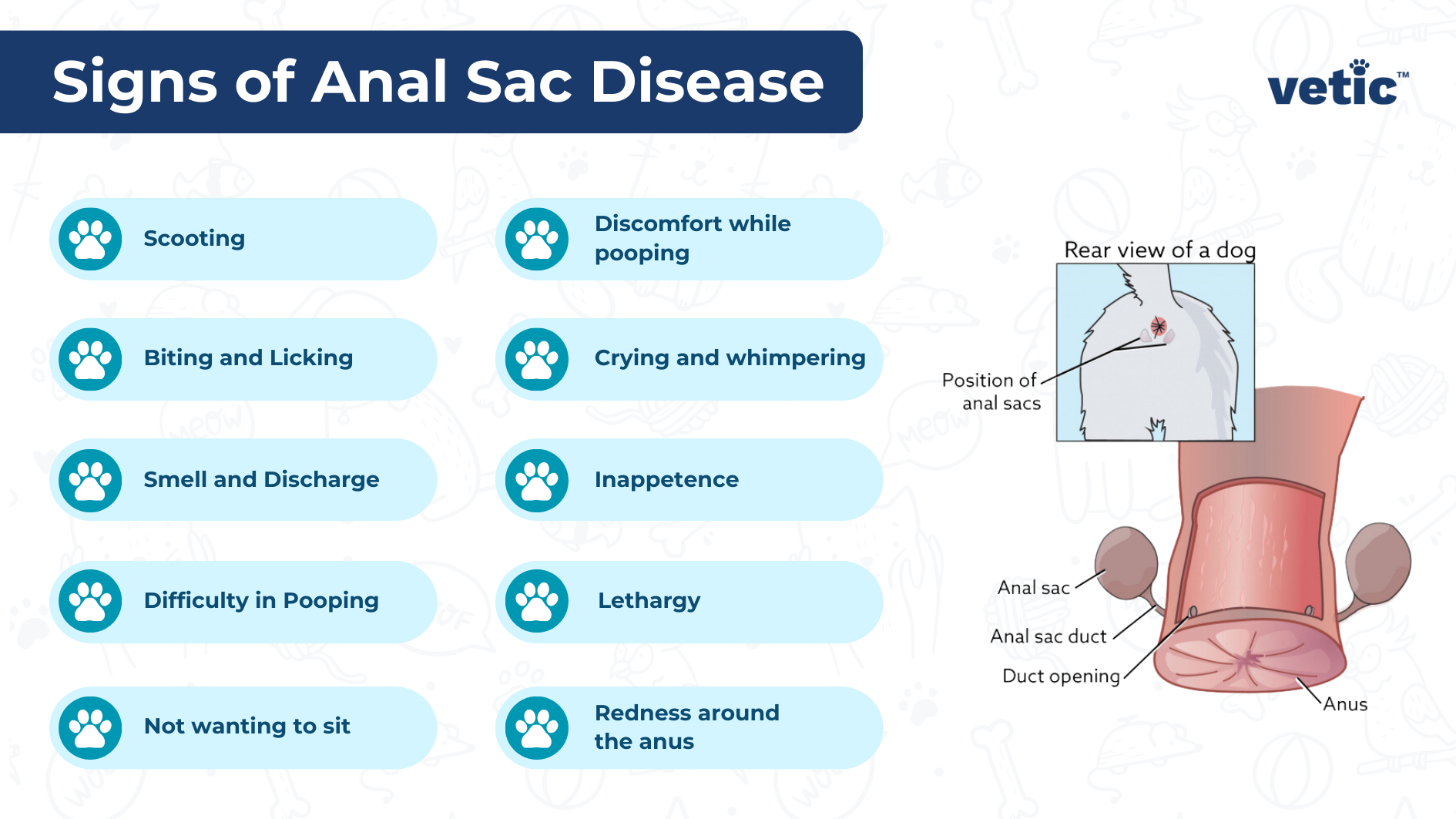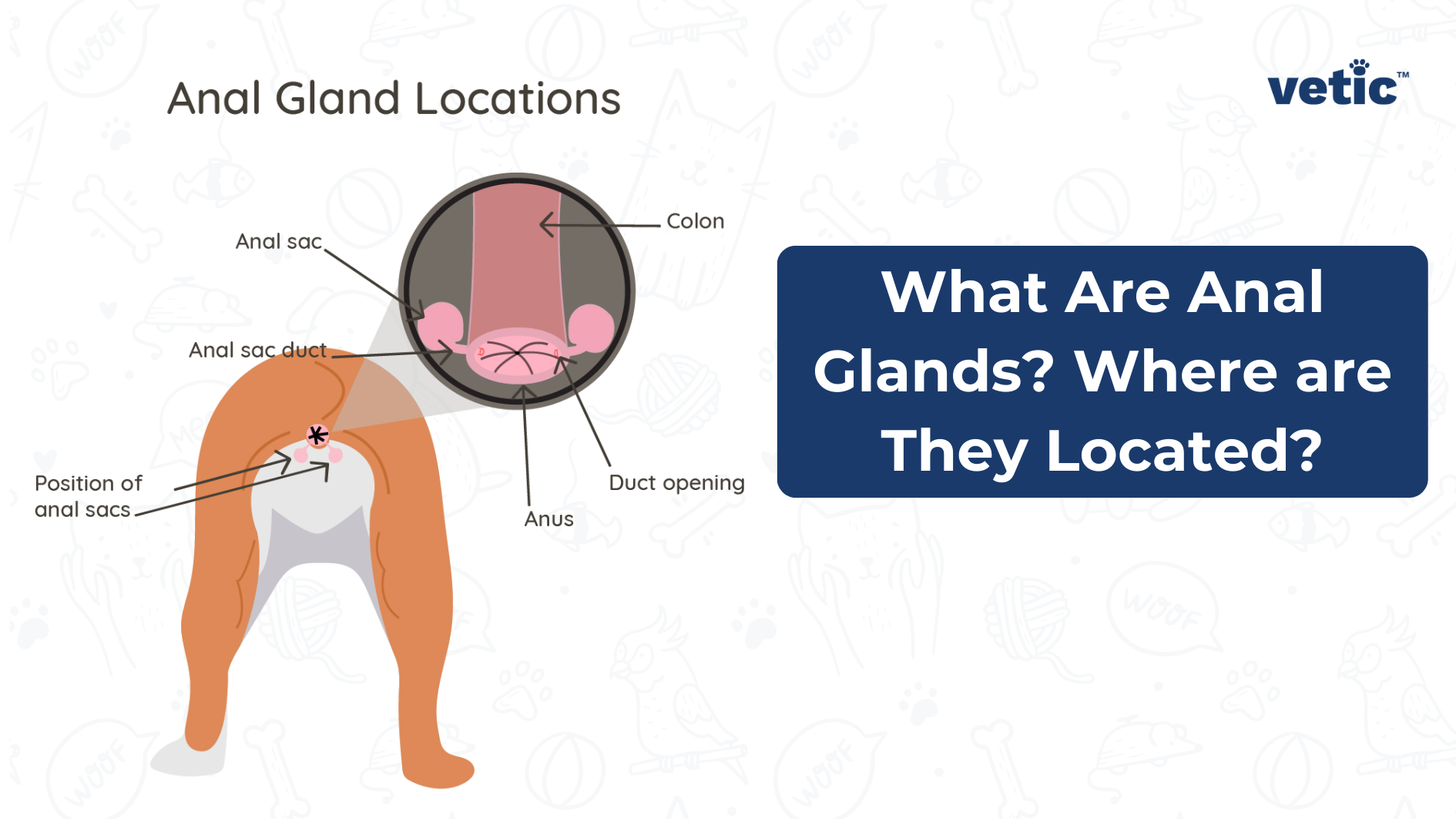What are Anal Sacs? Where are the Anal Sacs in Dogs Located?
Anal sacs, commonly known as anal glands, are pouches located near the anus of a dog. Their walls are lined with sebaceous glands and they store a foul smelling fluid.
Anal sacs in dogs have ducts that open inside the anus and these anal sacs are also known as anal glands. The anal sacs are present in male and female dogs.
What is the Function of Anal Sacs in Dogs?
What humans find gross can be beneficial for dogs! Anal gland secretion in dogs works as territory markers. The anal secretion passes with the bowel movement and it provides a distinctive smell to a dog’s faeces.
Hope that explains why dogs are always busy sniffing poopies at the park!
Can Dogs Clean Their Anal Sacs Naturally?
Yes! Most dogs should be able to clean their anal glands or sacs while they pass stools. So, if your dog is eating well and having proper solid stools, their anal sacs should be clean enough.
The anal sac fluid is squeezed out by muscle contractions whenever the dog poops.
What is Anal Sac Disease?

Anal sac disease in dogs is actually very common. The sac becomes clogged/plugged due to the inflammation of the ducts. As the ducts narrow down and closed, the sac becomes full of the fluid which creates pressure and pain in the anal area. It may even make pooping painful for dogs.
The anal sac fluid is quite ideal for bacterial growth and it allows the formation of abscesses. At the same time, bacteria that’s normally present in the poop can travel up the duct and cause serious infection.
Once the anal sacs are infected, the fluid may become bloody and cause the formation of pus, leading to anal sac abscess.
What are the Different Types of Anal Sac Disease?
Some of the common anal sac diseases in dogs are –
Impaction
Anal sac impaction is the most common anal sac disease in dogs. It happens when the anal sac ducts become “clogged” and the sacs do not empty properly.
The anal sac becomes inflamed and continues to fill with the fluid. It causes severe pain and discomfort.
Anal Sacculitis
Anal sac impaction can proceed to infection of the anal sac which is called anal sacculitis.
Anal sacculitis can result in the formation of abscesses or even the rupture of the anal sac. The process can result in the release of pus and blood.
Anal Sac Adenocarcinoma
It is the most serious anal sac disease. It is a type of cancer that is uncommon in dogs.
Anal sac adenocarcinoma affects middle aged and older dogs. Cocker Spaniel, Cavalier king Charles Spaniel and Springer Spaniel are at higher risk of adenocarcinoma or cancer of the anal sacs.
What are the Signs of Anal Sac Disease in Dogs?

The common signs of anal sac disease in dogs include –
Scooting
Scooting is when a dog drags their butt on the floor, ground, carpet or bed.
Biting and Licking
Dogs will try to bite and lick the area right under their tail and around the anus, almost obsessively.
Smell and Discharge
Pet parents may even notice a distinctly foul “fishy” smell. They may even notice traces of discharge wherever their dog scoots.
Difficulty in Pooping
Due to the pain, dogs may strain to defecate or yelp during defecation.
Other signs may include –
- Not wanting to sit
- Discomfort while pooping
- Crying and whimpering
- Inappetence
- Lethargy
- Redness around the anus
What’s the Treatment for Anal Sac Disease in Dogs?
If you catch your dog scooting, take them to the veterinarian.
The veterinarian will be able to express your dog’s anal sacs if they are not impacted already. If the anal sac contents have hardened, the vet can use medication to soften the anal sac fluid and clean the anal sacs.
The exact treatment will depend upon the type of anal disease.
In a few cases, where the doctor suspects bacterial or yeast infections, they might take a sample of the fluid for microscopy.
In the case of anal sacculitis, the doctor is likely to prescribe oral antibiotics along with flushing the anal sacs with saline and antiseptic solutions.
Your veterinarian may also recommend a biopsy if they suspect a tumour growth inside the anal sac.
How to Prevent Anal Sac Disease in Dogs?

The prevention of anal sac disease in dogs begins with a proper nutritious diet that helps in solid stool formation. The anal sacs are supposed to be expressed as the dog poops.
Maintain proper body weight and avoid unwanted weight gain in dogs of all breeds and ages.
The other way to prevent anal sac disease is by taking them for grooming and veterinary check-ups daily, where the professionals can safely express your dog’s anal sacs.
If your dog experiences repetitive inflammation and infection of the anal sacs, then your veterinarian may also recommend surgery to remove the anal glands.
Tips to Keep Your Dog’s Anal Glands Healthy
- Give them proper food in ideal quantities appropriate for their age.
- Keep an eye on their poop. If it’s too soft, speak to your veterinarian.
- Prevent them from becoming too overweight.
- Take them to the veterinarian more frequently after they cross 5 years of age.
- Ask for health supplements if your dog has anal sac health issues.
Do not ignore the signs of anal sac disease. Early diagnosis can reduce the pain and discomfort, as well as the cost of treatment.
